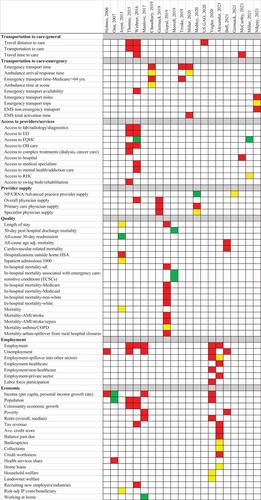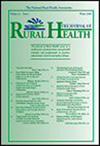To compile the literature on the effects of rural hospital closures on the community and summarize the evidence, specifically the health and economic impacts, and identify gaps for future research.
A systematic review of the relevant peer-reviewed literature, published from January 2005 through December 2021, included in the EMBASE, CINAHL, PubMed, EconLit, and Business Source Complete databases, as well as “gray” literature published during the same time period. A total of 21 articles were identified for inclusion.
Over 90% of the included studies were published in the last 8 years, with nearly three-fourths published in the last 4 years. The most common outcomes studied were economic outcomes and employment (76%), emergent, and non-emergent transportation, which includes transport miles and travel time (42.8%), access to and supply of health care providers (38%), and quality of patient outcomes (19%). Eighty-nine percent of the studies that examined economic impacts found unfavorable results, including decreased income, population, and community economic growth, and increased poverty. Between 11 and 15.7 additional minutes were required to transport patients to the nearest emergency facility after closures. A lack of consistency in measures and definition of rurality challenges comparability across studies.
The comprehensive impact of rural hospital closures on communities has not been well studied. Research shows predominantly negative economic outcomes as well as increased time and distance required to access health care services. Additional research and consistency in the outcome measures and definition of rurality is needed to characterize the downstream impact of rural hospital closures.



